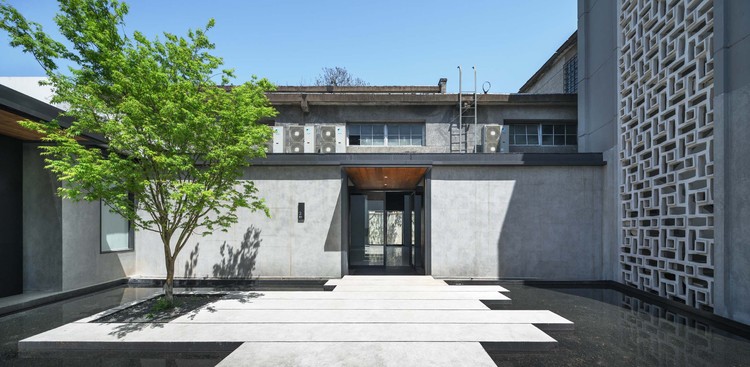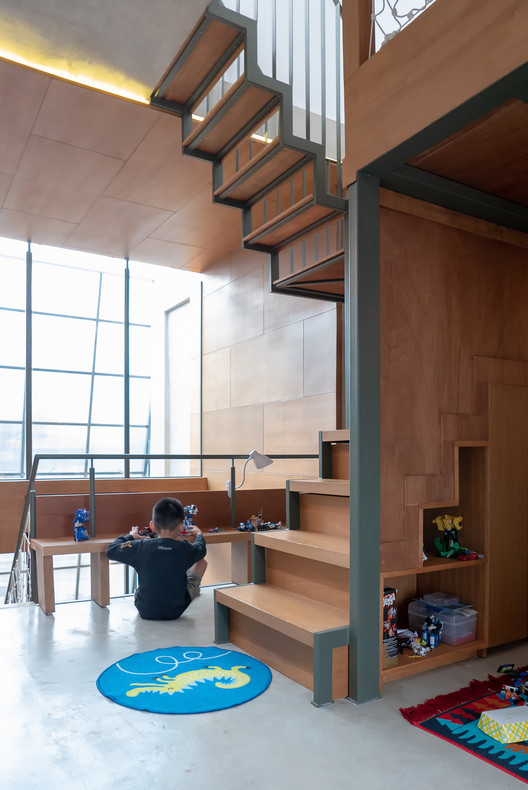Villas Jonc Christian von Düring
2016-08-31 03:00
© Thomas Jantscher
C.Thomas Jantsche


架构师提供的文本描述。这个由三个附属房屋组成的项目遵循可持续发展的原则,在整个建筑生命周期内尽量减少对环境的影响,确保个人舒适,同时鼓励邻居之间的社会关系,获得长期投资回报,并使维护和运营成本保持在较低水平。
Text description provided by the architects. This project of 3 attached houses follows the principals of sustainable development in an effort to minimize the impact on the environment during the entire life cycle of the building, ensure individual comforts while encouraging social relationships between neighbors, secure a long-term return on investment and keep maintenance and running costs low.
© Thomas Jantscher
C.Thomas Jantsche


该项目的目的之一是促进共同生活的优势,同时保持每套住宅的个性。根据车库的位置和入口处的入口定义,每栋房屋都是通过一条穿过私人庭院的通道发现的。在另一边,露台给了一个共同的花园和个别房屋的表达被抹去,以给予一个大房子的感觉。
One of the objectives of the project is to foster the advantages of shared living while maintaining the individuality of each dwelling. By the position of the garages and the portal definition of the entrances, each house is discovered by means of a passage through a private courtyard. On the opposite side, the terraces give onto a common garden and the expression of the individual houses is erased to give the feeling of one big house.
© Thomas Jantscher
C.Thomas Jantsche




© Thomas Jantscher
C.Thomas Jantsche


通过对结构布局和材料的选择,最大限度地发挥了工程的灵活性,使每栋房屋都能不同的布局,体现出自己的个性。在整个结构层面上,未来发展的可能性是存在的,甚至有可能通过增加两层楼来最终改造成一座小型公寓大楼,从而保持其可持续性,并将其融入未来的城镇规划。
By the structural layout and choice of materials, the project is conceived for maximum flexibility. Each house can vary its layout and express its own individuality. And at the level of the entire structure, the possibility exists for future evolution, even to an eventual transformation into a small apartment buildingby adding two stories, thereby maintaining its sustainability and potential integration into a future town planning.
© Thomas Jantscher
C.Thomas Jantsche


在这个项目中,首选使用天然材料(夯土、陶土砌体)。
In this project, the use of natural materials was preferred (rammed earth, terracotta masonry & wood), choosing materials according to their level of gray energy and their durability. The construction is composed of a series of masonry walls on the ground floor, which support a wooden volume above. As inspired by local rural construction, the masonry protects the wood from the ravages of ground humidity and at the same time compensates for the wood’s lack of inertia. Furthermore, a rammed-earth monolith, made from the earth excavated for the basement, penetrates each dwelling from top to bottom. It adds a passive regulation of temperature and humidity. In addition to the windows on the facade, a central skylight ensures that every room benefits from natural lighting and ventilation. Finally, by the manual opening of a trap window, cool temperate air from the lower level is drawn through the house and out the skylight to act as a natural cooling system.
© Thomas Jantscher
C.Thomas Jantsche




© Thomas Jantscher
C.Thomas Jantsche


这些例子说明了该项目如何将复杂的自动调节系统最小化,并优先采用被动解决方案,从而优化了所有四个季节的能源消耗。
These examples illustrate how the project minimizes complex automated regulation systems and gives preference to passive solutions, thereby optimizing energy consumption during all four seasons.
© Thomas Jantscher
C.Thomas Jantsche




















































Architects Christian von Düring
Location Grand-Saconnex, Switzerland
Category Sustainability
Area 1720.0 m2
Project Year 2009
Photographs Thomas Jantscher
Manufacturers Loading...































